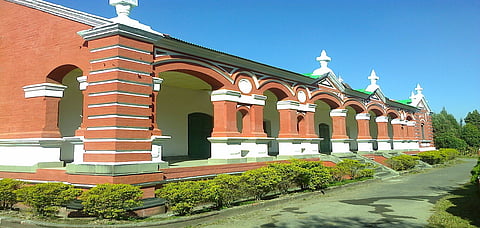
- Destinations
- Experiences
- Stay
- What's new
- Editor’s Picks
- Responsible Tourism
- CampaignsCampaigns
- Subscribe

The North East is a lot like the magician's hat. It hides so many wonders that can have you spellbound. When it comes to forts and palaces, the states in North East India never appear in travellers' minds. But some of the seven sisters have many magnificent structures belonging to a completely different era that will excite the history-lover in you.
Bhismaknagar Fort
Located in Dibang Valley in Arunachal Pradesh, this fort dates back to when the Chutia kings ruled from the 8th to 10th century. According to the inscriptions retrieved, Bhismaknagar, at one point, used to be a thriving political centre and the capital under King Laksminarayana's rule.
Even though only the ruins of the grand structure are now left behind, you can still witness the fine craftsmanship of that era through the enormous boundary walls made of granite and bricks.
Dirang Dzong
When you visit Dirang Dzong, you're not just seeing a fort, but a small village settled within the fortified stone walls (a lot like Jaisalmer fort in Rajasthan). The fort features the "dzong architecture" found in Bhutan, Tibet and the Bomdila-Tawang region of Arunachal Pradesh.
This 17th-century fort was apparently built to protect Bomdila from invaders and was also used as a jail during the World Wars.
Dirang Dzong Fort
Semoma Fort
The Semoma fort of Khonoma witnessed many battles between the British army and the Angami warriors from 1850-79. The British Army's Major John Butler even called it "the strongest fort in the North East". However, the fort's structure doesn't suggest that it had once been at the centre of so many crucial face-offs&ndashapart from three small structures made of heavy rocks, stands a plaque in memory of the village's British political officer, G H Damant.
Inside Semoma Fort
Kangla Fort
Since 33 AD, when the mythical God-King Nongda Lairen Pakhangba ascended the throne, Kangla fort has been at the centre of many power transitions. As different Kings assumed power, the defence was developed and renovated further into what it stands today. The complex houses many temples and a museum within its mighty walls.
